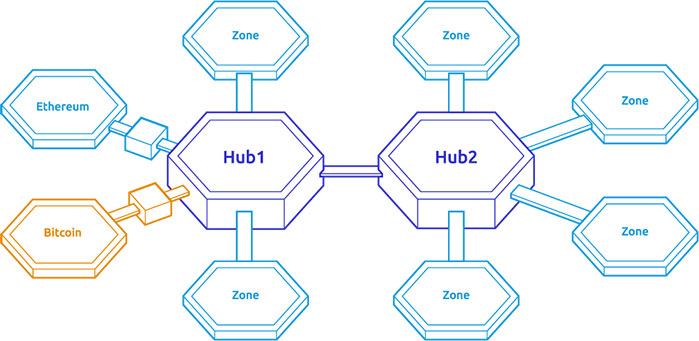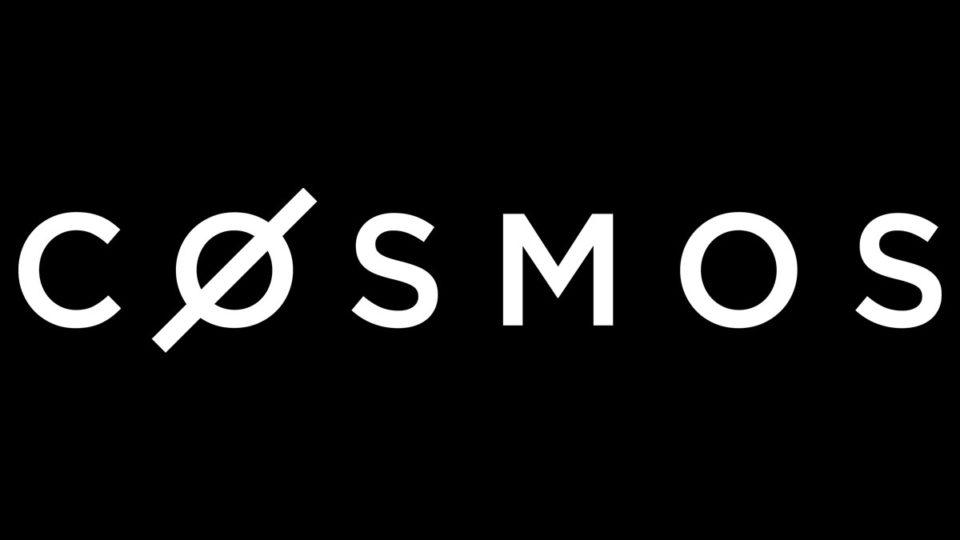Cosmos is an ecosystem of numerous apps and services that connect to each other and create a comprehensive network. All of the services and applications are decentralized and create a network of connected blockchains with each other.
This network calls itself the internet of blockchains which shows the ultimate goal of creating an interconnected system with various apps and services.
The universe of connected service is a bold promise from Cosmos that aims to create a universal system. It focuses on connecting various apps to each other and making the usability of blockchain services as easy as possible.
The apps and services in this interconnected system are connected to each other using IBC. IBC is the Inter-Blockchain Communication protocol in Cosmos. It helps users and developers connect to multiple sovereign blockchains and exchange data, assets, or anything else between them.
What is Cosmos Network?
Cosmos Network is a network of numerous apps and services. These apps and services can run, and be manages on different blockchains. Connecting them and offering inter-blockchain services is the main objective of Cosmos.
This network has lots of features that help users and developers benefit more from blockchain technology. One of the best features is that it makes blockchains powerful because of interoperability and connectivity.
Besides, developing blockchains becomes easy using the Tendermint BFT of this network. Cosmos SDK is another offering that makes it easy to develop a new blockchain.
Transferring value is very easy using Cosmos Network. Blockchains can use IBC and Peg-Zones on this network to transfer value or any other kind of data. The data transfer process won’t harm the sovereignty of the connected blockchain.
This connectivity makes it possible for numerous blockchain-based applications to scale horizontally and vertically. In simple terms, they connect to this network and find access to millions of users in other connected blockchains.
It’s good to say that Cosmos isn’t a product or a single blockchain but an ecosystem of connected apps and services. It’s built on a set of modular, adaptable, and interchangeable tools.

What Problems does Cosmos Network solve?
The main goal of Cosmos Network is to solve the connectivity issue in the blockchain industry. It offers services and tools for developing blockchains and decentralized applications.
IBC is a great tool for connecting blockchains in this network. The ultimate result is an internet of blockchains with numerous decentralized services on it.
Scalability is a very big problem that can be used with Cosmos Network. This ecosystem helps dApps find access to millions of users on various blockchains. The scalability is possible both vertically and horizontally.
Vertical scalability is possible because of moving away from the PoW protocol and optimizing the components. This network can handle thousands of transactions per second only if the application itself doesn’t have any limitations.
Horizontal scalability is possible with a solution called multi-chain architecture. In this architecture, parallel blockchains run the dame application. A common validator set operates all of these applications. As a result, the blockchain will be theoretically infinitely scalable.
Cosmos Hub
Cosmos Hub is the economic center of Cosmos Network. It’s a blockchain that provides numerous services to blockchains that are connected to it. According to the official website, Cosmos Hub’s services include:
“the largest interchain token exchange, shared security through interchain security, bridges to Ethereum (ETH) and Bitcoin (BTC), and secure custodianship of digital assets.” ATOM is the primary token of this blockchain.
The economic center is built on top of a Byzantine Fault Tolerant consensus engine. Some of the vital services in this blockchain are:
Interchain Accounts
The accounts in the world that Cosmos has maid with its IBC are called Interchain Accounts. Blockchains can securely control accounts on other chains over IBC using these types of accounts.
In simple terms, users will open an account in this network and find access to the entire interchain ecosystem. As a result, one account will do everything on numerous connected blockchains to Cosmos Hub.

Staking
An economic center isn’t complete without financial products. Staking is one of the most important offerings in the Cosmos Hub. It’s built on top of the Hub’s staking module called the Tendermint BFT consensus engine.
In simple terms, ATOM holders stake or lock their tokens in this service to secure the chain. They receive transaction fees as rewards for their contribution.
Governance
The Hub has a decentralized governance mechanism that gives power to users. They can stake their ATOM tokens and receive rights to participate in the open governance process.
Proposing changes in the blockchain and voting for/against proposals are the rights that ATOM stakers receive for their holdings. They have an active role in the evolution of the network.
Gravity DEX
The economic center of Cosmos Network becomes complete with a decentralized exchange. Gravity DEX is the place where users can swap their digital tokens inside the Hub. The swappable tokens are from all of the connected blockchains in the interchain. This decentralized exchange combines both AMM concepts with a model that is based on an order book. It results in a richer and more efficient trading experience.
Gravity Bridge
Ethereum is still the most popular blockchain for decentralized apps and services. There are still numerous projects running on it. New innovative solutions like Cosmos Network need a connection to that blockchain to offer more comprehensive solutions.
Gravity Bridge is the cross-chain bridge from Cosmos Network to Ethereum. It’s backed by billions of dollars of ATOM tokens staked in the ecosystem. Using the bridge, ERC-20 tokens can come to the Cosmos Network and vice versa.
ATOM The Token
The native token of Cosmos Hub is named ATOM. This token is basically responsible for securing the numerous services on the blockchain. One of the main use-cases for this token is staking that gives contribution power to stakers. Those who stake or lock ATOM receive rewards in newly minted ATOM tokens.
Besides, they receive a share of transaction fees. Voting in the Cosmos Hub governance mechanisms is also possible by staking ATOM tokens.
Conclusion
Connectivity and scalability are two of the big challenges in the blockchain industry. Cosmos Network focuses on solving these challenges by offering an interconnected ecosystem. There are numerous apps and services in this ecosystem. It helps blockchains connect to each other and also transfer data.
Cosmos Hub is the economic center of this network with the primary token, ATOM. It can become the first choice for future developers because of easier scalability.
Cosmos Network Links
- Official Website: https://cosmos.network/
- Twitter: https://twitter.com/cosmos
- Discord: https://discord.gg/cosmosnetwork
- Medium: https://blog.cosmos.network/

